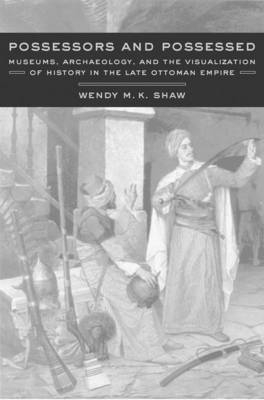
Possessors and Possessed
Museums, Archaeology, and the Visualization of History in the Late Ottoman Empire
Seiten
2003
University of California Press (Verlag)
978-0-520-23335-5 (ISBN)
University of California Press (Verlag)
978-0-520-23335-5 (ISBN)
Analyzes how and why museums emerged in the late-nineteenth-century Ottoman Empire. This work argues that, rather than directly emulating post-Enlightenment museums of Western Europe, Ottoman elites produced categories of collection and modes of display appropriate to framing a new identity for the empire in the modern era.
"Possessors and Possessed" analyzes how and why museums - characteristically Western institutions - emerged in the late-nineteenth-century Ottoman Empire. Shaw argues that, rather than directly emulating post-Enlightenment museums of Western Europe, Ottoman elites produced categories of collection and modes of display appropriate to framing a new identity for the empire in the modern era. In contrast to late-nineteenth-century Euro-American museums, which utilized organizational schema based on positivist notions of progress to organize exhibits of fine arts, Ottoman museums featured military spoils and antiquities long before they turned to the 'Islamic' collections with which they might have been more readily associated. The development of these various modes of collection reflected shifting moments in Ottoman identity production. Shaw shows how Ottoman museums were able to use collection and exhibition as devices with which to weave counter-colonial narratives of identity for the Ottoman Empire.
Impressive for both the scope and the depth of its research, "Possessors and Possessed" lays the groundwork for future inquiries into the development of museums outside of the Euro-American milieu.
"Possessors and Possessed" analyzes how and why museums - characteristically Western institutions - emerged in the late-nineteenth-century Ottoman Empire. Shaw argues that, rather than directly emulating post-Enlightenment museums of Western Europe, Ottoman elites produced categories of collection and modes of display appropriate to framing a new identity for the empire in the modern era. In contrast to late-nineteenth-century Euro-American museums, which utilized organizational schema based on positivist notions of progress to organize exhibits of fine arts, Ottoman museums featured military spoils and antiquities long before they turned to the 'Islamic' collections with which they might have been more readily associated. The development of these various modes of collection reflected shifting moments in Ottoman identity production. Shaw shows how Ottoman museums were able to use collection and exhibition as devices with which to weave counter-colonial narratives of identity for the Ottoman Empire.
Impressive for both the scope and the depth of its research, "Possessors and Possessed" lays the groundwork for future inquiries into the development of museums outside of the Euro-American milieu.
Wendy M. K. Shaw is Assistant Professor of Near Eastern Languages and Cultures at Ohio State University, Columbus.
| Erscheint lt. Verlag | 12.6.2003 |
|---|---|
| Zusatzinfo | 43 b-w photographs, 2 maps |
| Verlagsort | Berkerley |
| Sprache | englisch |
| Maße | 152 x 229 mm |
| Gewicht | 590 g |
| Themenwelt | Kunst / Musik / Theater |
| Geschichte ► Allgemeine Geschichte ► Neuzeit (bis 1918) | |
| Geisteswissenschaften ► Geschichte ► Hilfswissenschaften | |
| Geisteswissenschaften ► Geschichte ► Regional- / Ländergeschichte | |
| ISBN-10 | 0-520-23335-2 / 0520233352 |
| ISBN-13 | 978-0-520-23335-5 / 9780520233355 |
| Zustand | Neuware |
| Haben Sie eine Frage zum Produkt? |
Mehr entdecken
aus dem Bereich
aus dem Bereich
Giordano Bruno - ein ketzerisches Leben
Buch | Hardcover (2024)
C.H.Beck (Verlag)
29,90 €
die Fahrt der Bounty und die globale Wirtschaft im 18. Jahrhundert
Buch | Hardcover (2024)
Klett-Cotta (Verlag)
25,00 €


